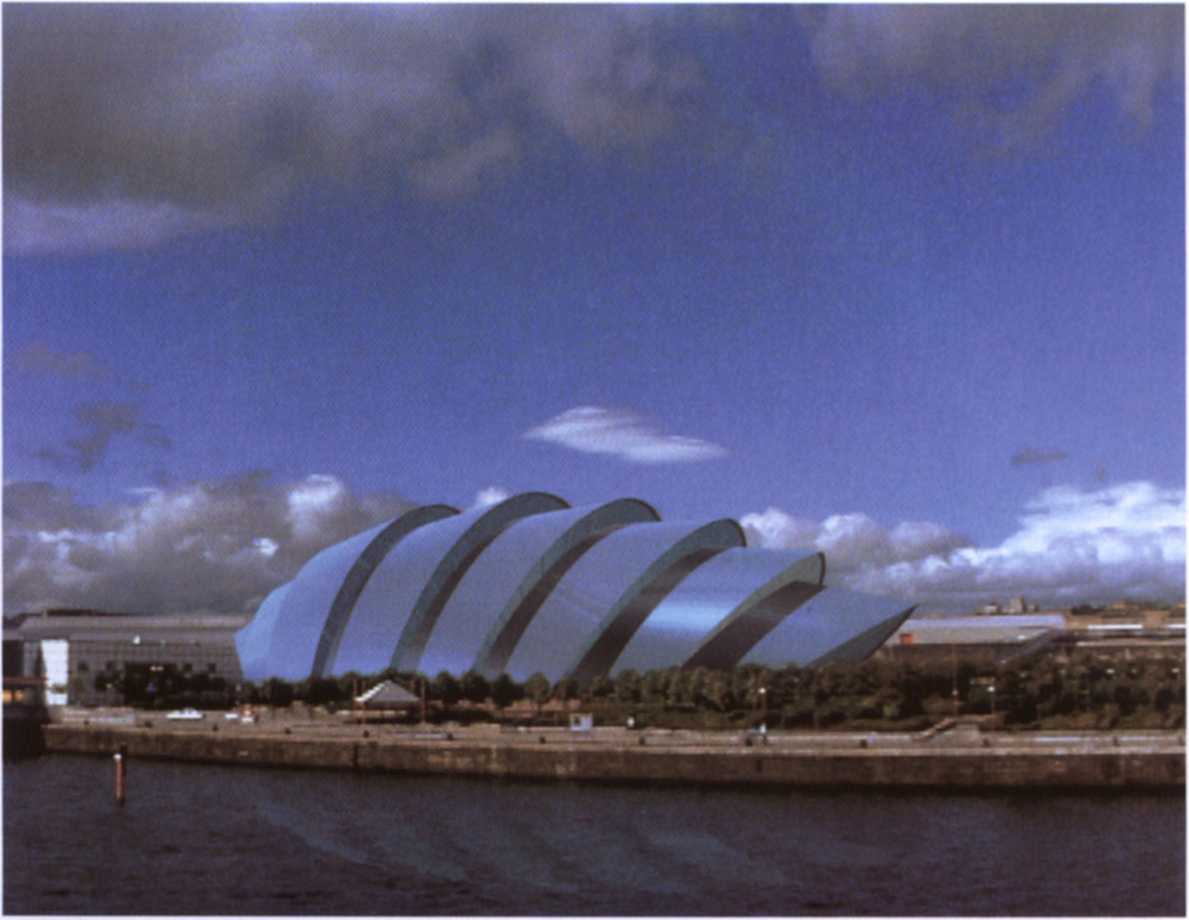New Forms Taschen 198


Although less poetic than his Unazuki Meditation Space, the Takaoka Station in Japan, by the Barcelona architect Enric Miralles, contains very similar sculptural elements. Moving beyond the applied decoration that has been anathema to modern architecture sińce the early part of the century, this project seeks to integ-rate an exuberant manipulation of Steel forms with the entrance to a railroad station. Indeed, the point madę by Miralles and others about the new-found freedom of architecture to explore the rangę of possibilities of fered by the world of art is not that architecture should embody the notion of 'art for art's sake." Rather what is sought here is a renewal of the vocabulary of the built enyironment, an enrichment that can only seek out ways to make the experience of entering and using a building morę enlightening and fulfiliing. After the long period in which functionality ruled above any other consideration, this search for new forms must be hailed as a true liberation of architecture.
Christian de Portzamparc's Palais des Congres project in Paris, already men-tioned above, brings to the fore the problems posed by the reuse or expansion of modern buildings. Whereas, prior to the twentieth century, large urban structures were often designed as though they were to last forever, economic considerations and evolving attitudes toward architecture imposed the construction of an enorm-ous number of buildings that clearly were not meant to withstand the force of time. Less sensitive esthetically than the guestion of older buildings whose facades are
Outlook 209
Wyszukiwarka
Podobne podstrony:
New Forms Taschen 054 Although the influence of the French projects may only be peripheral in this i
New Forms Taschen 164 Although Kawamata vigorously rejects any relationship between his use of wood
New Forms Taschen 022 Pages24/25 Alessandro Mendini ef a/. Groninger Museum Groningen, The Neth
New Forms Taschen 171 Pi ges 182/183 Tadao Ando Meditation Spać*. UNESCO Pan*, Franca, 1994-95 This
New Forms Taschen 034 computer-oriented than Eisenman and some others, Erie Owen Moss has nonethe-le
New Forms Taschen 190 Samitaur in Culver City challenges the use of urban space in a slightly differ
New Forms Taschen 208 permanent than their designers intended. As cities expand and tight budgets pr
więcej podobnych podstron